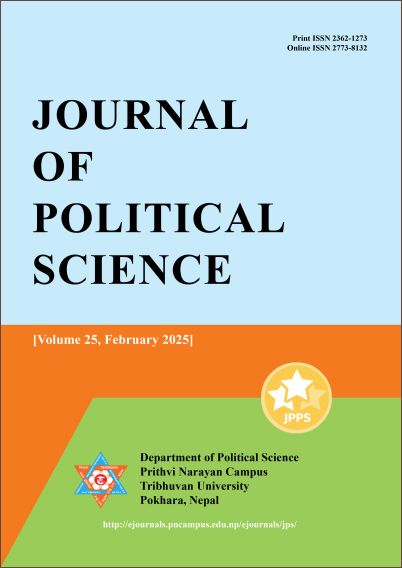Implementation of Federalism in Nepal: Insights from Karnali Province
DOI:
https://doi.org/10.3126/jps.v25i1.75768Keywords:
Corruption, federalism, Karnali province, local governance, power distributionAbstract
Federalism, as a system of governance, distributes power across national, regional, and local authorities to foster democratic participation and active citizen engagement. Nepal's 2015 Constitution established a federal structure, marking a pivotal shift intended to empower local governments for more effective governance. This transition generated considerable optimism that it would address historical marginalization, promote inclusive development, manage diversity, prevent conflict, strengthen local and provincial governance, and enhance citizen involvement. This study investigates the effectiveness of local government entities in Nepal in fulfilling their constitutional obligation to implement federalism, focusing on the Karnali province. It assesses the obstacles they face in fulfilling their legal and constitutional duties nationwide. The study uses qualitative research techniques such as key informant interviews, focus group discussions, policy dialogues, and a case study within two municipalities in Karnali province. The results reveal that traditional formal procedures govern policy development and execution, leaving minimal opportunity for community participation. Financial constraints and dependencies have curtailed local governments' fiscal independence and capacity to generate resources. Additionally, local governments face challenges in addressing emerging issues or enhancing public service delivery due to insufficient innovative capabilities. In conclusion, this paper highlights the obstacles and constraints in enacting the federal system at the local level and evolving local governments into autonomous bodies in Nepal.
Downloads
Downloads
Published
How to Cite
Issue
Section
License

This work is licensed under a Creative Commons Attribution-ShareAlike 4.0 International License.




